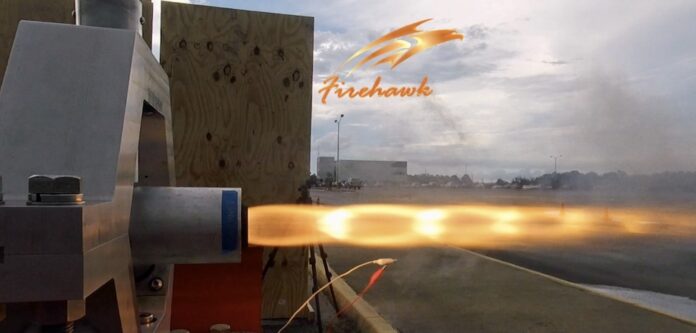A successful test ahead of a very first launch is often a good sign for a space company especially when we know that the complexity and pressure often increase when we deal with a different process. That’s anyway what we think the team at Firehawk experienced during the testing of their rocket engines and 3D printed fuel.
The space company appeared on our radar two years ago after securing $2M to manufacture rocket engines powered by 3D printed rocket fuel. What makes them outstanding is the fact that, unlike most rocket engines that rely on traditional — and naturally volatile — fuels, Firehawk’s rocket engines are hybrid, with a more stable new solid fuel. This solid fuel grain would be easier to transport and burn in a very predictable way.
The best part of it? It’s that these engines are manufactured using AM and a sophisticated parametric design.
After several tests of such engines at smaller scales, they found a way to adapt it to the space environment. “It’s a unique engine with its throttling ability, low cost of manufacture, and a parametric design, so we can design for a missile interception system or second stage booster,” CEO Will Edwards said.
In addition to better safety, printing the fuel grains differently makes it possible to create different thrust characteristics. And the whole thing can be safely slowed, stopped and started again multiple times. Though this is often the case with liquid rocket engines, it isn’t with solid ones: they blast at 100% until they run out of fuel, meaning you only get one shot at it and your options for force vectors are limited — more like a drag racer than a normal car, one learns.
“Our engine can replace solid rocket motors with something significantly lower cost, on par with fuel performance, but you can control its burn — that’s something the industry finds incredibly compelling,” Edwards noted. The need for solid motors in defense and research is steady, and the improved customizability and other characteristics make Firehawk an attractive alternative for missions with varying requirements.
The engine burn tests recently performed at Stennis Space Center with NASA supervision confirmed they are ready to fly; this was a decisive milestone that that would enable Firehawk to increase its revenue.
With $15.5 million raised so far, they are expecting to close a series B funding of $17 million.
According to our media colleagues from Techcrunch, there’s no plan to make launch vehicles or anything like that — Firehawk is strictly engines, with no aspirations to making satellites or any other spacefaring or airborne items. They just provide the thrust, and upcoming in-atmosphere demonstrations would show off the capabilities for sub-orbital operations.
Remember, you can post job opportunities in the AM Industry on 3D ADEPT Media free of charge or look for a job via our job board. Make sure to follow us on our social networks and subscribe to our weekly newsletter : Facebook, Twitter, LinkedIn & Instagram ! If you want to be featured in the next issue of our digital magazine or if you hear a story that needs to be heard, make sure to send it to contact@3dadept.com


